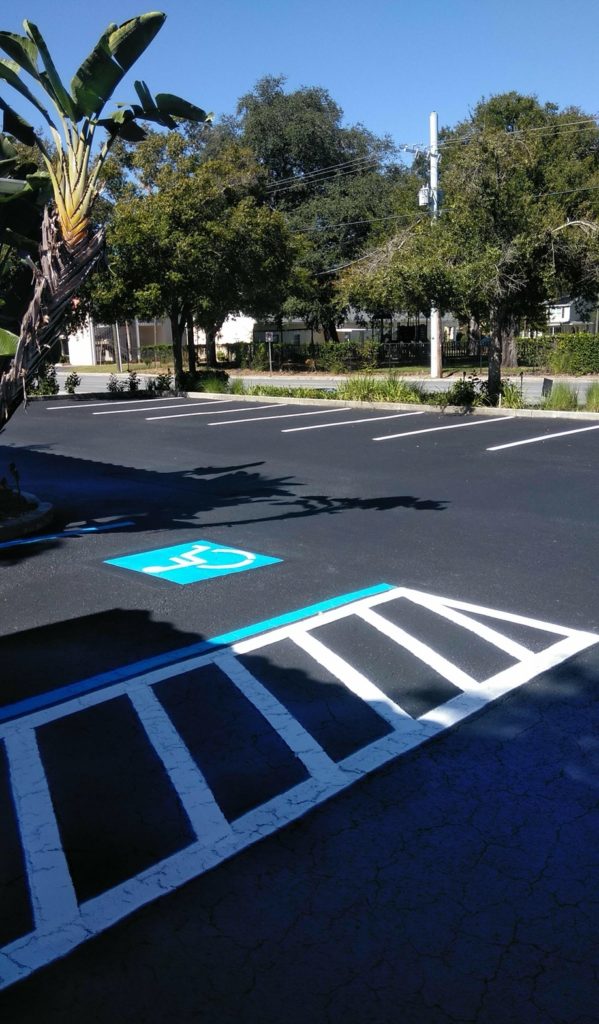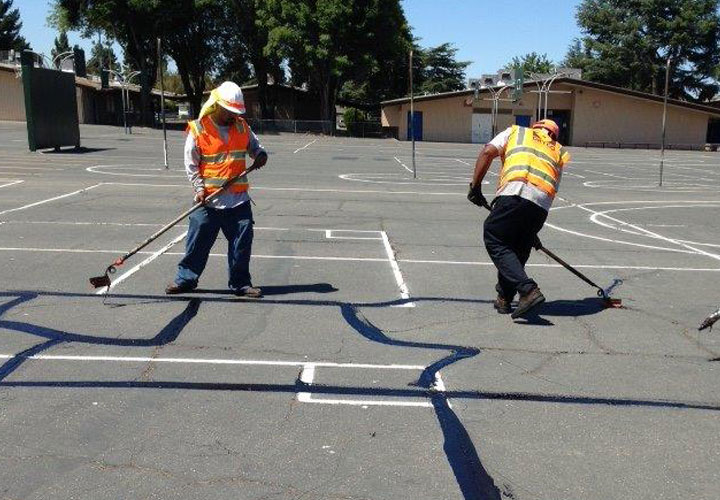Safeguard Surfaces with Professional Asphalt Sealing: Cold Mix Basics
Cold Mix Asphalt Vs. Hot Mix Asphalt: Which Is Right for You?

Make-up Differences
Cold mix asphalt is created by emulsifying the asphalt binder with water and an emulsifying representative before mixing it with accumulation. The hot mix asphalt production process involves warming the accumulation and asphalt binder separately before integrating them at the asphalt plant.
Moreover, cool mix asphalt often tends to be much less thick and much more flexible than hot mix asphalt. This versatility makes it much better matched for areas with higher degrees of motion, such as driveways or roads with rush hour. In contrast, warm mix asphalt is recognized for its high toughness and resistance to rutting and fracturing, making it a recommended option for highways and high-traffic roads where longevity is essential.
Setup Refine Differences
The process of installing chilly mix and hot mix asphalt shows remarkable differences in their treatments and demands. Cold mix asphalt, being a more versatile product, can be used straight from the bag or container onto the fracture or harmed area. It requires very little preparation job, such as cleaning up the location and condensing the cold mix with hand tools. This makes it a practical option for short-lived and quick solutions. In contrast, hot mix asphalt requires a much more fancy setup process. It includes heating the blend to heats before laying it down on a correctly prepared base. The preparation consists of compacting the base, applying a tack coat, and using heavy equipment like pavers and compactors for a long lasting and smooth surface. As a result of the home heating requirements, warm mix asphalt installments are typically performed by specialists with specific tools, ensuring a more irreversible and structurally sound outcome.
Longevity and Durability Variables
When considering asphalt options, resilience and longevity are vital variables to review for long lasting sidewalk efficiency. Warm mix asphalt (HMA) is understood for its phenomenal longevity and longevity. The high temperature levels throughout the mixing and laying procedure permit far better compaction, leading to a denser and stronger pavement framework. This brings about HMA being extra resistant to hefty web traffic loads, severe climate condition, and the effects of maturing contrasted to cool mix asphalt (CMA)
In regards to durability, HMA normally outmatches CMA due to its premium stamina and resistance properties. HMA sidewalks have a longer life span, calling for much less regular fixings and maintenance, which can convert to cost financial savings in the long run. Furthermore, HMA sidewalks are much more quickly personalized to meet certain job requirements, further boosting their longevity.
Cost Considerations
Taking into consideration the economic implications is a vital aspect when examining the option between hot mix asphalt (HMA) and cold mix asphalt (CMA) for pavement projects. While the preliminary expense of warm mix asphalt is generally higher than that of cold mix asphalt, HMA often offers a much more cost-effective option in the lengthy run due to its premium durability and durability.
In enhancement to product costs, it's vital to consider the costs connected with setup and upkeep when contrasting HMA and CMA. HMA normally calls for customized tools and proficient labor for correct installation, which can impact general project costs. On the other hand, CMA is easier to deal with and can frequently be used using easier strategies, possibly reducing installment costs. Inevitably, the choice in between HMA and CMA need to consider not just the preliminary price but likewise the lasting financial implications to determine the most affordable choice for the details pavement job.
Environmental Influence Contrast
Contrast of the ecological impacts in between warm mix asphalt (HMA) and cool mix asphalt (CMA) exposes distinctive distinctions in sustainability methods. HMA manufacturing requires high temperatures, leading to increased power usage and greenhouse gas emissions.
Furthermore, making use of CMA often entails reusing existing asphalt sidewalk, promoting source preservation and lowering the amount of waste sent to land fills. This reusing element even more boosts the sustainability of CMA compared to HMA. Overall, when taking into consideration the ecological effect, CMA arises as check my site a more pop over to these guys ecologically lasting choice because of its reduced energy needs, reduced exhausts, and the possibility for reusing existing products. By choosing CMA over HMA, road building tasks can contribute positively to ecological preservation initiatives.
Verdict
To conclude, the choice in between chilly mix asphalt (CMA) and hot mix asphalt (HMA) relies on various elements such as structure, installment process, longevity, durability, price, and ecological impact. asphalt patch repair. While CMA supplies a cost-efficient and fast option for minor repair services, HMA makes certain premium sturdiness and durability for rush hour locations. Take into consideration these elements meticulously to identify which kind of asphalt is the ideal choice for your paving requires

Taking into consideration the economic effects is a vital element when assessing the selection between warm mix asphalt (HMA) and cool mix asphalt (CMA) for pavement tasks. While the initial cost of warm mix asphalt is typically greater than that of chilly mix asphalt, HMA often supplies a more cost-efficient remedy in the lengthy run due to its superior durability and longevity. asphalt repair.Comparison of the environmental impacts in between warm mix asphalt (HMA) and cold mix this link asphalt (CMA) reveals distinctive differences in sustainability methods.In verdict, the choice between cool mix asphalt (CMA) and warm mix asphalt (HMA) depends on various variables such as composition, setup process, toughness, long life, price, and environmental influence